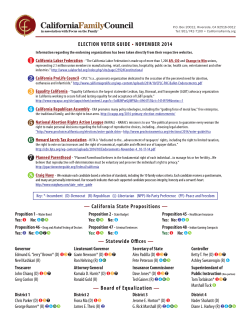
Global risk model for the atmospheric dispersion of radionuclides by
Global risk model for the atmospheric dispersion of radionuclides by nuclear power plant accidents T. Christoudias 1 , Y. Proestos 1 , J. Lelieveld 1,2 (1) The Cyprus Institute, Nicosia, Cyprus (2) Max Planck Institute for Chemistry, Mainz, Germany Cyprus Institute christoudias@cyi.ac.cy 1st International Confernence on Nuclear Risks Outline 1 2 3 4 NPP Global Atmospheric Risk Model Simulations Model Validation: Fukushima NPP Accident Emissions Risk Assessment Global Surface Level Concentration Risk Seasonal Variability Ground Deposition Relative Population Risk 5 Uncertainty Estimates 6 Outlook T. Christoudias (CyI) NPP Risk Analysis NURIS 2 / 15 NPP Global Atmospheric Risk Estimate global risk from atmospheric dispersion of radionuclides from nuclear power plant (NPP) accidents Risk Assessment Model: Relative, Climatological - no assumption on time of accident and emission profile: • • • • • Use global atmospheric model (EMAC: ECHAM5/MESSy) Emission and transport of aerosol and gas radionucludes Constant continuous emissions from each NPP (1000 hPa) Removal through decay (gas), dry & wet deposition (aerosol) Relative Risk estimate: Normalized Climatic average of surface concentrations, cumulative ground depositions T. Christoudias (CyI) NPP Risk Analysis NURIS 3 / 15 Model simulation 20 yr run (2010–2030) for climatic representability: • Model boundary conditions (SST) from IPCC A2 scenario • Concentrate on two radio-isotopes with adverse effects: • Caesium • • • Cs: Water-soluble aerosol Long decay half-life (30 yrs) – no simulated decay Removed predominantly through precipitation and 5-10% dry deposition & sedimentation • Iodine • • 137 131 I: Modeled purely in the gas phase Atmospheric removal through exponential decay (half-life 8 days) T. Christoudias (CyI) NPP Risk Analysis NURIS 4 / 15 Model Validation: Fukushima Accident • • • • • Model setup validated for Fukushima NPP accident Simulated of 137 Cs, 131 I, 133 Xe transport, decay & deposition Emission profiles by i) Stohl et al., ii) JAEA Meteorology driven by ECMWF ERA-Interim reanalysis Model validated against CTBTO global station measurements T. Christoudias (CyI) NPP Risk Analysis NURIS 5 / 15 Nuclear Power Plants Emission Sources 189 Operating (OP) 16 Under Construction (UC) 36 Planned (PL) Source: World Nuclear Association (WNA), 2014 T. Christoudias (CyI) NPP Risk Analysis NURIS 6 / 15 Surface Level Concentration 131 Mean 20-yr surface-level concentration of gaseous I 131 I Risk highest in US mid-west, east, Japan continental Europe, maximum in southwestern Germany T. Christoudias (CyI) NPP Risk Analysis NURIS 7 / 15 Risk Seasonal Variability DJF MAM JJA SON Increased surface concentration risk in Northern Hemisphere winter T. Christoudias (CyI) NPP Risk Analysis NURIS 8 / 15 Ground Deposition 137 Cs Climatological total global cumulative dry and wet deposition & sedimentation of aerosol 137 Cs Enhanced risk over tropics: wet deposition due to heavy precipitation T. Christoudias (CyI) NPP Risk Analysis NURIS 9 / 15 National Risk Distribution Nuclear policy making at the national level: Provide risk estimates for all NPP opearated/planned by each country/nation Data for all countries available online T. Christoudias (CyI) NPP Risk Analysis NURIS 10 / 15 Relative Risk by Country Relative Risk Index (RRI) = Relative Concentration/Deposition × Population Exposed 400 Relative Risk Index 350 Ground deposition Inhalation 300 250 200 150 100 50 US IN FR DE JP CN PK CH TW GB ES RU KR BE UA SK CZ IR MX CA NL HU SI SE BR BG AM RO FI AR ZA 1 NPP(OP) Highest risk index globally by USA, followed by India and France T. Christoudias (CyI) NPP Risk Analysis NURIS 11 / 15 Relative Risk Planned & Proposed NPP Under Construction NPP Relative Risk Index 250 Proposed NPP 250 Ground deposition Inhalation 200 Relative Risk Index 300 200 150 100 Ground deposition Inhalation 150 100 50 50 1 1 IN CN VN US JO NPP(PL) TR IR RU SK EG UA BY LT FI ZA CN IN TW AE RU JP NPP(UC) Future risk index to become highest in China, followed by India and the USA. T. Christoudias (CyI) NPP Risk Analysis NURIS 12 / 15 Statistical Uncertainty Operating Planned Under Construction Coefficient of variation (σ/µ): • Overall within 5% • Does not exceed 20% locally Temporal variability appropriately captured T. Christoudias (CyI) NPP Risk Analysis NURIS 13 / 15 Outlook Refinements underway: • Runs at higher resolution (120→50 km) for impacts • Ensemble of IPCC scenarios for systematic uncertainty range Future Outlook: • Data available for interfacing with impacts studies (e.g. human health) • Per country itemized risk analysis possibility available • Model available and open for collaborations on NPP risk assessment • Global Climatological Risk Assessment approach complementary to regional/scenario specific studies T. Christoudias (CyI) NPP Risk Analysis NURIS 14 / 15 References T Christoudias, Y Proestos, J Lelieveld Atmospheric Dispersion of Radioactivity from Nuclear Power Plant Accidents: Global Assessment and Case Study for the Eastern Mediterranean and Middle East Energies 7 (12), 8338-8354 T Christoudias, Y Proestos, J Lelieveld Global risk from the atmospheric dispersion of radionuclides by nuclear power plant accidents in the coming decades Atmospheric Chemistry and Physics 14 (9), 4607-4616 T Christoudias, J Lelieveld Modelling the global atmospheric transport and deposition of radionuclides from the Fukushima Dai-ichi nuclear accident Atmospheric Chemistry and Physics 13 (3), 1425-1438 T. Christoudias (CyI) NPP Risk Analysis NURIS 15 / 15
© Copyright 2025











